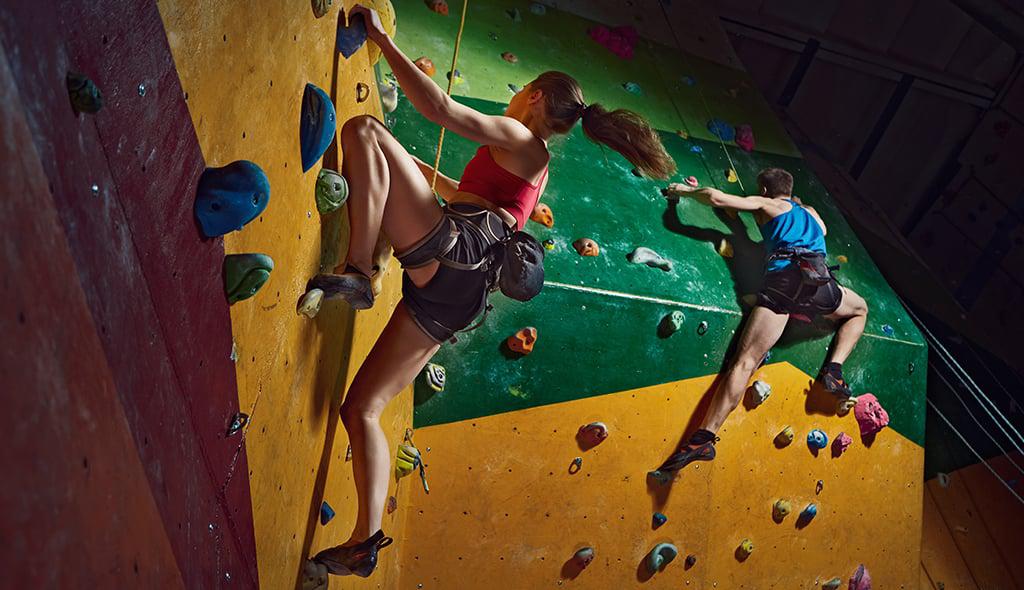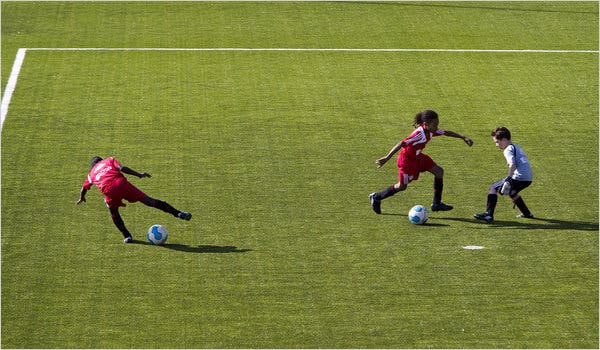The best shoes for indoor rock climbing are specifically designed climbing shoes which provide a snug fit and have a sticky rubber sole to improve grip on the climbing holds. Rock climbing is an exhilarating sport that requires not only physical strength, but also the right gear to ensure safety and success.
One crucial piece of equipment for indoor rock climbing is the right pair of shoes. Wearing the correct shoes can significantly enhance your climbing experience by providing the necessary support, grip, and stability. When it comes to indoor climbing, regular sports shoes or sneakers are not the ideal choice.
Instead, specialized climbing shoes are designed to optimize performance on climbing walls. These shoes have a close fit, allowing for better sensitivity and precision when gripping holds. Additionally, their sticky rubber soles provide excellent traction, allowing climbers to confidently navigate different types of holds and routes. We will explore the qualities to look for in indoor rock climbing shoes and offer guidance on selecting the perfect pair that suits your needs and skill level. Whether you are a beginner or an experienced climber, choosing the right shoes can significantly enhance your climbing abilities and overall enjoyment of the sport. So, let’s dive in and find your perfect pair of climbing shoes!
Understanding The Types Of Climbing Shoes
Indoor rock climbing requires the right kind of shoes to provide grip and support on the climbing wall. Understanding the types of climbing shoes can help you make the right choice for your climbing style and preferences.
| Type of Climbing Shoes | Purpose and Features |
|---|---|
| Bouldering Shoes | Designed for short climbs, provide maximum rubber coverage and tight fit for precise movements. |
| Sport Climbing Shoes | Feature a balance between comfort and performance, suitable for longer climbs and varied terrain. |
| Trad Climbing Shoes | Designed for traditional climbing, provide support for placing gear and long-lasting comfort for multi-pitch climbs. |
| Aggressive Shoes | Offer enhanced performance for overhanging climbs and hard bouldering problems, with downturned shape and sticky rubber. |
Choosing the right type of climbing shoes depends on your personal preferences and climbing style. If you mainly engage in bouldering, a pair of bouldering shoes with maximum rubber coverage and a tight fit is ideal. For sport climbing or longer climbs, sport climbing shoes strike a balance between comfort and performance. Traditional climbing shoes are suitable for those who prefer traditional climbing methods and need support for gear placement. If you enjoy overhanging climbs and challenging bouldering problems, aggressive shoes with a downturned shape and sticky rubber can provide the necessary performance.
Determining The Right Fit For Maximum Performance
| What Kind of Shoes to Wear for Indoor Rock Climbing | |
| Determining the Right Fit for Maximum Performance | |
| Importance of proper fit in climbing shoes | |
|
|
Proper fit is crucial when it comes to finding the right shoes for indoor rock climbing. Understanding the different fit styles available is essential, as it ensures maximum performance and comfort during climbs. When trying on climbing shoes, there are several factors to consider. Firstly, pay attention to the toe box to ensure it provides enough room for your toes to move and flex. Additionally, check the heel cup for a snug fit to prevent any slippage or discomfort. The shoe should also have a secure closure system, such as laces or straps, to keep your foot stable. Overall, aim for a snug and comfortable fit that allows precise footwork without sacrificing comfort. Investing time in finding the perfect fit will greatly enhance your climbing experience.
Evaluating The Climbing Shoe Materials And Construction
When it comes to choosing the right shoes for indoor rock climbing, it’s essential to evaluate the materials and construction of the climbing shoe. Different materials offer varying levels of performance and durability, while construction techniques impact the shoe’s overall fit and comfort.
| Materials | Pros | Cons |
|---|---|---|
| Rubber | Superior grip on holds | Wears out more quickly |
| Leather | Molds to the shape of your foot | Less precise fit |
| Synthetic | Durable and lightweight | Less breathable |
Construction techniques, such as board-lasted and slip-lasted, affect the shoe’s performance by influencing its sensitivity and stiffness. A board-lasted shoe provides better edging and support, whereas a slip-lasted shoe offers increased sensitivity and flexibility. It’s important to consider your climbing style and personal preference.
Lastly, durability and longevity should also be taken into consideration. Quality materials and expert construction ensure that your climbing shoes will withstand the rigors of indoor climbing sessions, allowing you to focus on your ascent without worrying about premature wear and tear.
Considering Climbing Shoe Features For Specific Needs
When it comes to indoor rock climbing, the right pair of shoes can make all the difference. Consider the specific needs of your climbing style to find the perfect fit. Specialized features are crucial for different climbing disciplines, enhancing performance and safety.
Edging, smearing, and toe hooking are important techniques in rock climbing. Shoes with features like a stiff sole, sticky rubber, and a downturned toe can provide the necessary support and grip for these moves. Whether you’re climbing slabs or vertical faces, these shoe characteristics will give you the stability and control you need.
For crack climbing, thin and flexible shoes are key. They allow your feet to fit into tight cracks and provide sensitivity for precise foot placements. Bouldering, on the other hand, requires shoes with aggressive downturns to maximize toe power and grip on steep overhangs.
Remember to prioritize comfort, fit, and durability in addition to specialized features. Finding the right shoe for your indoor rock climbing needs will significantly enhance your climbing experience and performance.
Evaluating The Sole And Rubber Compounds
Balancing durability, stickiness, and performance is essential when choosing the right climbing shoes for indoor rock climbing. One key factor to consider is the type of rubber compounds used in the shoe soles. The rubber compound greatly affects the grip and traction on different surfaces.
There are several types of rubber compounds commonly used in climbing shoe soles:
| Type | Characteristics |
|---|---|
| Hard rubber compound | Durable and long-lasting, ideal for rough indoor surfaces |
| Stickier rubber compound | Offers better friction and grip on holds, suitable for vertical and slab climbing |
| Soft rubber compound | Provides enhanced sensitivity and flexibility, excellent for smearing and steep overhangs |
When assessing the sole and rubber compounds, it’s essential to match the sole pattern to your climbing style. Some common sole patterns include lugs, dots, and smooth soles. Each pattern offers different advantages depending on the type of climbing you do, whether it be smearing, edging, or jamming.
By considering the sole and rubber compounds of climbing shoes, you can make an informed decision that enhances your performance and enjoyment during indoor rock climbing sessions.
Balancing Performance And Comfort For Long Sessions
Balancing Performance and Comfort for Long Sessions:
When it comes to indoor rock climbing, finding the right shoes is crucial to achieving optimal performance and lasting comfort. Tight-fitting shoes can sometimes cause discomfort, but there are ways to deal with potential issues. Here are some factors to consider for all-day climbing sessions:
- Comfort in Relation to Overall Performance: While performance is important, it’s equally vital to find shoes that provide adequate comfort. A balance between the two is necessary to ensure a successful climbing experience.
- Dealing with Potential Discomfort: Tight-fitting shoes may cause discomfort, especially during long climbing sessions. However, breaking in the shoes gradually and choosing the right size can help alleviate such issues.
- Factors to Consider: When selecting shoes for all-day climbing, factors such as cushioning, breathability, and support play a crucial role. Opting for shoes with adjustable closures and padded tongues can enhance comfort.
Achieving both performance and comfort in indoor rock climbing shoes is a key consideration. By evaluating comfort in relation to overall performance, addressing potential discomfort, and considering various factors for all-day climbing sessions, you can find the perfect shoes for your needs.
Determining The Right Stiffness And Sensitivity
Determining the right stiffness and sensitivity of indoor rock climbing shoes is crucial for optimizing your performance on the wall. The relationship between stiffness, sensitivity, and performance is interdependent, and evaluating different levels of stiffness and sensitivity can help you find the perfect balance. Stiffness refers to the rigidity of the shoe sole, which affects edging and support, while sensitivity is the shoe’s ability to transmit subtle foot movements and feel the rock surface. By determining your personal preference and needs, you can identify the ideal level of stiffness and sensitivity that suits your climbing style. Some climbers prefer stiffer shoes for precision and support on small edges, while others prioritize sensitivity for increased feel and comfort. Experimenting with different pairs can help you find the perfect fit for your climbing objectives.
Evaluating Climbing Shoe Closure Systems
When it comes to evaluating climbing shoe closure systems, it’s important to understand the different closure options available. The three main types are lace-up, Velcro, and slip-on closures, each with their own pros and cons.
| Closure System | Pros | Cons |
|---|---|---|
| Lace-up | Provides a customizable fit and tightness | Takes longer to put on and take off |
| Velcro | Quick and easy to secure | May become less secure over time with wear |
| Slip-on | Convenient and easy to slip on and off | Less adjustable and may not provide a snug fit |
When selecting a closure system for indoor rock climbing, there are a few factors to consider. These include the level of adjustability and customization desired, how quickly and easily the shoes can be put on and taken off, and the overall snugness and security of the fit. It’s important to find a closure system that suits your individual preferences and needs.
Considering Price And Budget Constraints
When considering what kind of shoes to wear for indoor rock climbing, it is important to find the right balance between price and quality. Understanding the relationship between price and performance can help you make an informed decision.
There are budget-friendly options available that do not compromise on safety and durability. Look for shoes that offer good grip on different types of surfaces, provide adequate support for your feet and ankles, and have a snug fit to enhance your climbing performance.
Consider features such as rubber soles with sticky compounds, breathable materials for comfort, and reinforced toe caps for added durability. It’s also a good idea to read reviews and seek recommendations from experienced climbers to find shoes that offer good value for money.

Credit: www.gore-tex.com
Expert Tips For Choosing Indoor Rock Climbing Shoes
Insights from experienced climbers and professionals:
1. Understand the climbing discipline: Different types of indoor rock climbing require specific shoe features. Bouldering, sport climbing, and trad climbing each have unique demands on footwear.
2. Consider shoe design: Opt for shoes with a snug, comfortable fit, ensuring a balance between support and flexibility. Look for a downturned toe and sticky rubber soles for better grip on the holds.
3. Assess shoe sizing: Sizing varies across brands, and it’s essential to try on different pairs to find the right fit. Rock climbing shoes are typically more snug than regular shoes to maximize performance.
4. Evaluate shoe materials: Choose between lined and unlined shoes based on personal preference. Unlined shoes tend to stretch more, while lined ones maintain their shape better.
5. Prioritize toe comfort: The toe box should provide enough space for toe sensitivity while avoiding unnecessary movement. A snug fit without pain is crucial for reliable footwork.
6. Test shoe performance: Give the shoes a test climb, paying attention to precision, edging, and smearing capabilities. The shoe should enhance your climbing abilities while providing ample support.
Frequently Asked Questions For What Kind Of Shoes To Wear For Indoor Rock Climbing
Do I Need Shoes For Indoor Rock Climbing?
Yes, shoes are necessary for indoor rock climbing. They provide better grip, support, and protection for your feet while climbing.
Can I Wear Normal Shoes For Rock Climbing?
Normal shoes are not recommended for rock climbing because they lack the necessary grip, support, and protection. Specialized rock climbing shoes are designed with sticky rubber soles for better traction and a snug fit to help navigate challenging terrain. Invest in proper climbing shoes to maximize safety and performance.
What Do I Wear To Indoor Rock Climbing?
Wear comfortable and flexible clothing for indoor rock climbing. Opt for athletic attire, such as leggings or shorts paired with a moisture-wicking shirt. Choose shoes with grippy rubber soles for better traction on the climbing wall. Avoid loose or baggy clothing that may snag on equipment.
Are Hiking Shoes Good For Indoor Rock Climbing?
Hiking shoes are not ideal for indoor rock climbing. Specific climbing shoes provide better grip and performance on rock walls.
Conclusion
To sum up, choosing the right pair of shoes for indoor rock climbing is crucial for a successful and enjoyable experience. Opt for shoes with a snug fit, sticky rubber soles, and good flexibility. Consider factors like your climbing style, the type of rock surface, and your personal comfort.
Remember that investing in the right footwear will enhance your performance and prevent potential injuries. Happy climbing!





